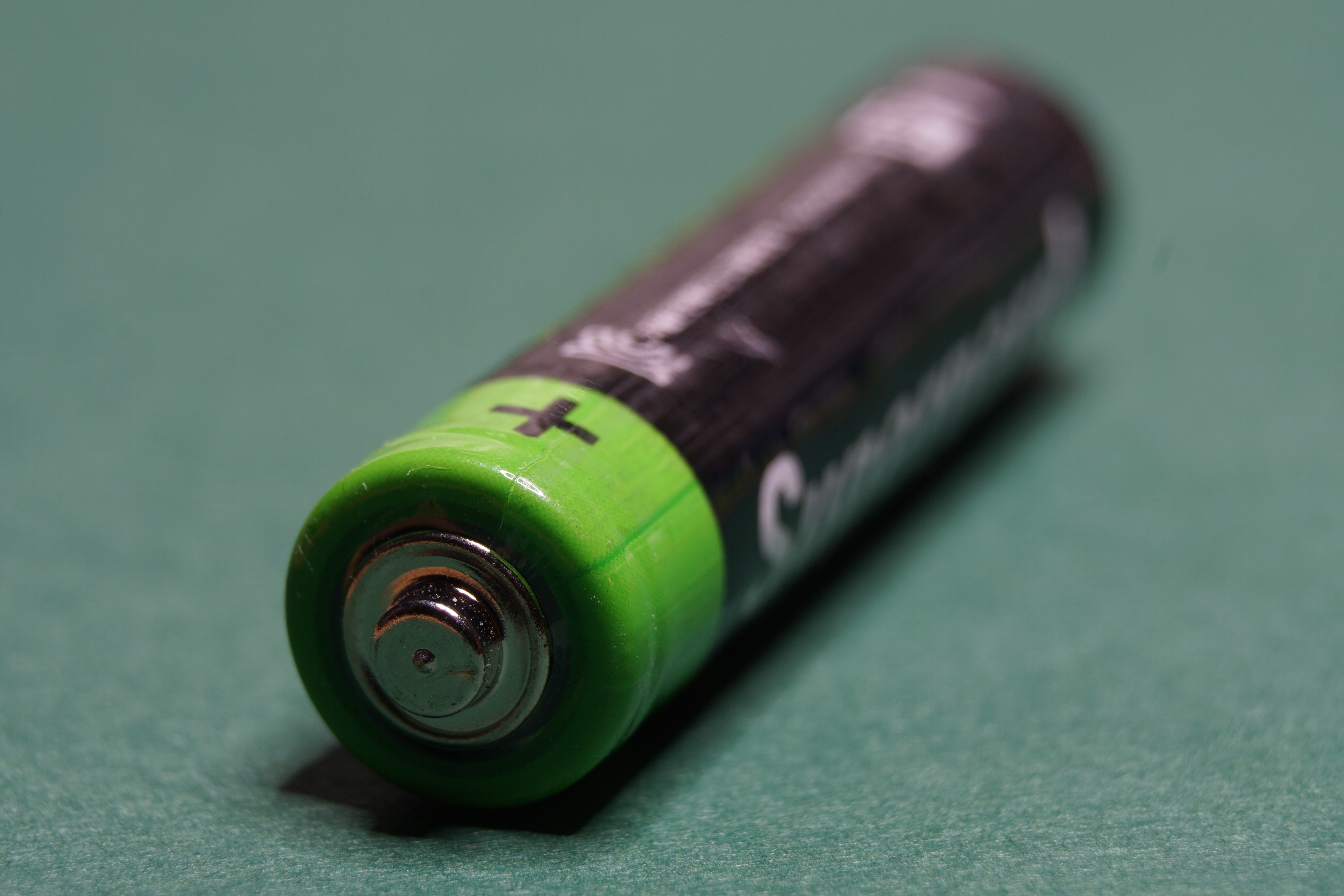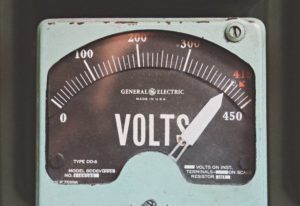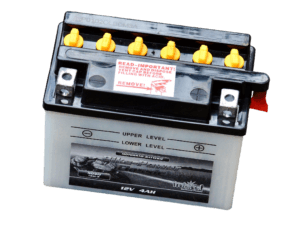Ebike’s need batteries. You know it, I know it, everyone knows it (I hope)! But this raises the question, what kind of battery do I get for my ebike? What is the best ebike battery?
If you’re confused about words such as lithium-ion, DC, volts and amps, then you’re in the right place!
Keep reading and we’ll take you from know-nothing-Noel to extensive-expertise-Edith.
Common Terms Glossary
It’s true. There are so many different terms you need to know to navigate the world of ebikes.
I want to make sure you know all the high tech lingo. So you too can speak the ebike language. If someone doesn’t know what watt-hours means, throw these definitions in their face. Yeah!
We’ll be likening a lot of these words to an analogy to better understand them. We’ll be using the water-flow analogy.
We use this analogy to relate electricity to water flowing through a pipe.
On to the definitions!
Volts
Volts (V) are the international standard unit for electrical potential difference.
In our water-flow analogy, volts are equivalent to the pressure of the water flowing through a pipe. A higher voltage means a “higher pressure” flowing through the pipe.
Common voltages for ebikes are 36V and 48V. However these are called “nominal voltages” which we’ll explain a little later in this article.
Amps
Amperes, (the actual name for Amps) are the international standard unit for electric current.
Amps are equivalent to the diameter or size of the pipe with water flowing through. So more amps means a larger pipe and more water flowing per second. Assuming the pressure (volts) remains constant.
Amp-Hours
Amp-Hours, or Ampere-Hours (Ah), is the measurement of amps multiplied by time. This gives us an indication of capacity.
A battery with 10Ah can discharge 10A continuously for an hour. Or it could discharge 1A continuously for 10 hours.
Watts
Watts (W) are a unit of power! You may be familiar with cars outputting horsepower. 150 horsepower is equivalent to 111 kilowatts. Kilo watts! That’s 111,000 watts.
One watt is one volt multipled by one amp.
More watts at once equals more power and therefore more fun!
Most ebike motors define their output power in watts.
Watt-Hours
Watt-hours is a unit of power per a specified amount of time. Compared to watts which measure power in a single moment.
Think of it like speed and distance. The speed of your car would be watts, whereas the distance travelled would be watt-hours.
If your ebike battery is discharging at 200W for an hour, it’s used 200Wh. If that same battery is discharging at 200W for 2 hours, it’s used 400Wh.
Now you know the important terms let’s learn some more about ebike batteries!
Picking The Type Of Battery
There’s quite a few types of battery that you could power your ebike with.
Some of the most common battery types include:
- Lead acid
- Nickel-cadmium
- Nickel-metal-hydride
- Lithium-ion
The names of these batteries come down to the chemistry used inside them. What makes them work is a combination of different chemicals. These interact to produce electricity! (Very simplistic view, but we don’t really need to know much more than that.)
So how do you decide what type of battery to use?
Here’s a quick rundown on each type and their uses.
Lead Acid
Lead acids batteries are known for being economical and robust for bulk applications. However they’re also known for being very heavy, and not as power dense as other battery chemistries. High power density means that for a specific weight and volume it has higher capacity. Low power density means the opposite. For the same size and weight battery, it has less capacity.
There’s 3 main uses for lead acid batteries.
They can be used for starter motors in cars. They’re also beneficial for stationary applications like power backup. Lastly lead acid batteries are great for deep-cycle applications (most often wheelchairs, scissor lifts, golf carts, house bus batteries and more).
Deep-cycle lead acids batteries are like these ones here!
Is this the best ebike battery?
Probably not.
We all know that more capacity is good in the ebike world, right? So we probably don’t want to use an overweight, clunky lead acid battery.
We’re not going to get very good range because we need to make our bike so heavy!
Nickel-Cadmium
Nickel-Cadmium batteries are very rugged and forgiving. This allows for large cycle counts if maintained correctly.
They’re able to be ultra-fast charged without compromise, and have great load performance. Meaning they won’t sweat it if you punch the throttle!
Nickel-Cadmium is most often used in the airlines. Yet it has some drawbacks.
It has low power density. Has a memory effect so needs to be discharged (fully!) periodically. Plus it has a very high (shockingly in fact) self-discharge rate. Nickel-Cadmium batteries will self-discharge 20% over the first 24 hours after being charged.
Power tools can also use nickel-cadmium batteries like these Tenergy Batteries.
Is Nickel-Cadmium the best ebike battery chemistry?
All of these drawbacks make them not very good ebike batteries. But it still can be done if you were really determined!
Nickel-Metal-Hydride
Nickel-Metal-Hydride batteries can hold about 40% more charge than Nickel-Cadmium. They also have less of a memory effect so don’t need to be fully discharged as much.
These bad boys look a bit like this!
However Nickel-Metal-Hydride batteries don’t have decent longevity. They’re also fickle to deal with when charging. Requiring a complex charge algorithm. Nobody wants to fluff around with that!
They generate heat quickly and have high self-discharge.
Not ideal!
Lithium-Ion
Ah, good old lithium ion batteries.
They’re in our smartphones, our laptops and our digital cameras. Pretty much everything we use in our day to day lives has a lithium ion battery.
There’s also many different kinds of lithium ion batteries.
In my own ebike battery, I have Samsung 25R 18650 cells. These have lithium manganese nickel chemistry.
Other popular cells are Panasonic GA 18650 cells. These are newer type batteries of LiNiCoAlO2 chemistry (Lithium Nickel Cobalt Aluminium Oxide). Also known as NCA cells.
Now these are the type of cells you want for the absolute best ebike battery!
A large battery that would be common for an ebike would be something like this 36V li-ion battery for your downtube. Alternatively you can get batteries that mount on a rear rack
over your rear wheel!
What Do Volts And Amps Do?
Volts and amps are two very important parts of choosing an ebike battery. They can make or break your build (or set your bike on fire by accident too!)
First let’s start with volts.
What Do Volts Do To My Ride?
Every ebike motor designed will have been made with a specific input volt range.
This means that you cannot power your ebike with too little, or too many volts.
Too little volts means that you won’t have enough pep to give the motor. Too many volts will fry the sensitive electronic components inside the motor.
Most ebike motors will accept either 36 or 48 volts. These are the two most common nominal voltages.
That’s another important thing to know about ebike batteries. They’re most often measured by nominal voltage. Nominal voltage is just a fancy way of saying the average voltage. This is because each cell inside a battery can hold a specific range of volts.
Most Lithium-Ion batteries (Li-Ion) will have 18650 cells inside. Lithium Cobalt Oxide battery cells hold 4.2V when fully charged and 3.0V when discharged.
My ebike battery has lithium manganese nickel cells, which we’ll focus on here.
48V batteries generally have 13 cell clusters. Each cell cluster has a nominal voltage of 3.7V. So we can calculate 3.7V * 13 cells = 48.1V or 48V nominal.
When fully charged however, this “48V” nominal battery will actually hold 4.2V * 13 cells = 54.6V.
As you discharge the battery, it will drop each cell from 4.2V down to 3.0V – a minimum voltage of 3.0V * 13 = 39V.
Volts translate into speed on your ebike. If you juice up your ride with more volts (but still within the operating limits of your motor!!) then you’ll reach a higher top speed. Assuming everything else stays constant.
I have a 52V battery from Luna-Mate (the New Zealand/Australia equivalent of Luna Cycle.)
Fresh off the charger I get 58.8V of jaw dropping power and speed!
Okay, but what about amps?
Amp Up My Ride?
Amps are the measure of flow at a certain pressure (volts) right?
What this translates to in real life is torque! More amps that your motor has available and can handle at once means more wheelie popping torque.
So my 52V 12.5Ah battery can peak at 70A and a continuous draw of 50A.
This is simply the rating of the battery. The motor might not pull that much current.
Motors only pull as much current as they need, so you won’t be able to kill a motor by selecting a battery with too high of a current output.
So if volts are the “oomph” into your ride, amps are how quickly the battery can deliver those volts. More volts = more “oomph”. Higher amp rating means more “oomph” per second (or whichever time interval you want to use). So you get more power all at one time meaning more torque.
More torque = more wheelies. >:)
So What Is The Best Ebike Battery?
If you’re after a reliable, safe and proven ebike battery, lithium-ion is the only way to go.
As more and more people get ebikes and demand lithium-ion batteries, they’re going to become more affordable. At the moment a reputable battery will cost around $500USD.
If you want more capacity or more volts, you’ll be paying much more. If you want less capacity or volts, you can get some very economical batteries.
Even though they are currently the best ebike battery, lithium-ion may not stay that way forever! Which is why you’ll find information on battery updates here!
Lithium-ion batteries need to be cared for in a specific way. We’ll explore this in another post in extensive detail!
If you want to combine your newly picked battery with a kit for your mountain bike – check out this article here!
For now, just keep your eyes peeled for the best ebike battery deals you can. Stores such as Luna Cycle or EM3EV will have great batteries that are safe and reliable.
I hope you’re now more informed about your battery choices! There’s still plenty to learn, but we can learn it as we go. 🙂
Have fun and as always, feel free to reach out to me in the comments or contact me here!





I’m looking for some tips on building a fat tire bike. I’m well versed in any thing that burns gas and makes noise. Electric stuff n bicycles not so much. I ‘ve heard of this bafang 8/fun bush 48v 1ooo watt mid mount motor. Will it mate up easily to the average 500 dollar fat tire bike? What kind of specs would I look for ?
Hey! Firstly, thanks for checking out my blog!
Absolutely, for a fat bike the ONLY motor I’d recommend is the BBSHD! You can purchase it specifically for a 120mm bottom bracket, like what is generally found on fatbikes.
I’d just make sure the bike you have, has enough room for the motor around the bottom tube.
Have you already got a fat bike, or still looking to grab yourself one? 🙂
ya
order from luna cycle of bafangusadirect (where I got my kit)
on these websites, you can email the companies for professional help
that bike will for sure work
make sure it has good brakes
What about LiFePo4?
I haven’t talked about them here as they’re not quite as commonly used as other lithium ion type batteries 🙂
Hi,
I am looking at a 1000watt electric bike kit but without the battery. the company says I need a battery capable of 22 amp continuous discharge and for the performance i need 48v.
So do I need a battery higher than 20amps?
I am very confused over this and can’t seem to find any information.
Hey Paul,
You’ll need a battery that delivers 48v, no less and usually no more (depending on the motor and controller) but to be safe and ensure you aren’t going to break anything stay with their recommended 48v.
As for the continuous discharge, this should be advised to you by the battery manufacturer. If it needs 22A continuous discharge, make sure you get one that can do that. In terms of the amps of your battery, it is only concerned with how long the battery will last. If your bike is drawing 22A under a normal load. A 22Ah battery will last 1 hour, an 11Ah battery will last 30 minutes, etc. Of course this is all relative depending on lots of factors, but is the general idea.
I hope this has helped you out a little bit!
Cheers,
Zade.
Thank you so much for the prompt reply,
I am a lot clearer as to the specifications of the battery I need.
I have found a couple on ebay that might do the job.
One is 1000watt, 48V 18ah and has a continuous discharge current of 30amps.
I have seen another similar but it’s 1500watt 30ah.
Also I have found a shop about 40 miles away that should be able to supply me with a battery.
Would the above batteries be suitable for the 1000watt kit i have in mind
Absolutely, either of those should be fine if they’re 48V and have a rating of 30Amps max continuous discharge.
Another thing to just keep in mind is that your motor will have a peak wattage that it may draw from your battery. It may be a peak of 40A for a second, but it’s worth considering to see if your battery can handle that high of a quick short peak burst. Usually, the motor manufacturer and battery manufacturer will tell you these numbers!
Hopefully you build yourself a rad e-bike and send some photos my way, I’d love to see it when you’re done! 🙂
Cheers,
Zade.
Sorry, I meant to say maximum continuous discharge of 30amps.
Hey Zade thanks for this, from someone who knows very little about anything engineering, the pipe analogy was really helpful! At the moment I’m deciding between the bbshd and the BBS02 for an e mountain bike with dual suspension. I’m tossing these up because I really want the extra power of the bbshd but I’m worried I’ll lose a lot of range, I know there are a ton of variables but roughly how much range do you think I would get from a 17amp hour battery using only the throttle?
Hey Richie, thanks for checking out my blog!
Glad to hear my analogy helped you out.
The range also slightly depends on what voltage your battery pack is. However, assuming a 48V which is standard, you’d get about 25mi (40km) on the high end and 12mi (20km) on the low end. Somewhere in there. It will depend on so many factors like the speed you’re going at, terrain type, hill, winds, etc.
But for a good range estimate, yeah I’d say about 20 – 40km.
Also in terms of power, if you’re using the motor for hard off road hill climbing, I would only go BBSHD due to it’s beefy build. Road and light off road use, the BBS02 would be great.
Check out my review on the BBSHD if you haven’t already!
Awesome! I think I’ll lock in the bbshd then thanks heaps!
I like to buy a battery litum battery emoto bike
Hey Wayne – do you know what kind of voltage or amperage you need for an emoto? Probably something large like 72v and lots of amps!
Hi Thanks for the info.
What in ur opinion would be the best battery for my ebike. I don’t need a lot of speed but what I do need is power to get up steep hills and will last for at least an hour . I currently have a 36 volt 10.4 ah 385 wh LG cells lithium ion battery It is fine for speed and also is powerful enough for the hills beside me but barely last for 30 minutes leaving be stuck quite often.
Can u recommend a battery that would suit my needs ?
Many thanks
Noel in Ireland
Hi my wife is thinking of buying her first e bike. She has seen one she likes on ebay which is 5 years old and in excellent condition. But according to the owner the battery is 5 amp?
When I`ve been looking on line the lowest I`ve seen is 10.
Is 5 now obsolete and if so is it easy to install a 10 amp on to the bike?
As you can see we are new to this. Please advise. Thanks
Great blog Zade! My LiFe PO4 battery died after 18 mths light usage and charging after every ride. I need to replace it but am worried about getting one that will match the electrics on my bike. Can you tell me what I need to know so that I don’t order the wrong one? Do you know how much it costs to ship a battery to Queensland?
Thx for shareing about wbike battery..very clear…easy to understand…
Great. Now I have more understanding about my ebike
Hi Zade,
This is a helpful article you have. Im new on ebikes and i would like to know if theres any difference in power and response output to my Ebike if im going to use a Sealed Lead Acid (SLA) battery that is commonly use for Solar? A friend of mine said that it is now recommended though the battery currently use by my ebike is a Gel Type Lead Acid Battery.
Considering they have both 48volts 20ah… Would there be any difference in the motor performance (350watts motor)?
I hope you can response to this.
Thank you,
Ryan Ismael
Het Zade,
you mentioned “Lithium-ion batteries need to be cared for in a specific way”, do you mind to elaborate on that, or you have already a web-page about that.
Thanks.
Lots of good info here thank you!
I was looking for an inexpensive battery for my e-bike build and came across someone on youtube using Ryobi batteries to power the bike. As I am trying to build using less expensive parts, I was wondering how you feel about this idea as the batteries for the Ryobi are much less than the bike batteries of similar voltage.
here is a link to the video if you wish to check it out: https://youtu.be/3Gx68l37BsY
I need more Ah and more life cycles,is lithium titanate is recommended?
i have a 48-20 battery and if I use it on a 36v motor but am careful not to gun it will I be ok? what about a stepdown device?